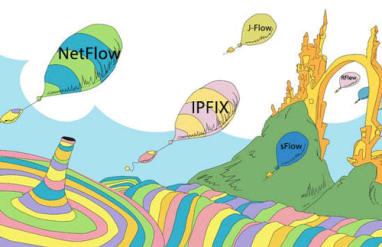Kentik Blog
























“NetFlow” may be the most common short-hand term for network flow data, but that doesn’t mean it’s the only important flow protocol. In fact there are three primary flavors of flow data — NetFlow, sFlow, and IPFIX — as well as a variety of brand-specific names used by various networking vendors. To help clear up any confusion, this post looks at the main flow-data protocols supported by Kentik Detect.
How does Kentik NPM help you track down network performance issues? In this post by Jim Meehan, Director of Solutions Engineering, we look at how we recently used our own NPM solution to determine if a spike in retransmits was due to network issues or a software update we’d made on our application servers. You’ll see how we ruled out the software update, and were then able to narrow the source of the issue to a specific route using BGP AS Path.
Destination-based Remotely Triggered Black-Hole routing (RTBH) is an incredibly effective and very cost-effective method of protecting your network during a DDoS attack. And with Kentik’s advanced Alerting system, automated RTBH is also relatively simple to configure. In this post, Kentik Customer Success Engineer Dan Rohan guides us through the process step by step.
As organizations increasingly rely on digital operations there’s no end in sight to the DDoS epidemic. That aggravates the headaches for service providers, who stand between attackers and their targets, but it also creates the opportunity to offer effective protection services. Done right, these services can deepen customer relationships while expanding revenue and profits. But to succeed, providers will need to embrace big data as a key element of DDoS protection.
The source of DDoS attacks is typically depicted as a hoodie-wearing amateur. But the more serious threat is actually a well-developed marketplace for exploits, with vendors whose state-of-the-art technology can easily overwhelm legacy detection systems. In this post we look why you need the firepower of big data to fend off this new breed of commercial attackers.
Whether its 70s variety shows or today’s DDoS attacks, high-profile success begets replication. So the recent attack on Dyn by Mirai-marshalled IoT botnets won’t be the last severe disruption of Internet access and commerce. Until infrastructure stakeholders come together around meaningful, enforceable standards for network protection, the security and prosperity of our connected world remains at risk.
DDoS attacks pose a serious and growing threat, but traditional DDoS protection tools demand a plus-size capital budget. So many operators rely instead on manually-triggered RTBH, which is stressful, time-consuming, and error-prone. The solution is Kentik’S automated RTBH triggering, based on the industry’s most accurate DDoS detection, that sets up in under an hour with no hardware or software install.
Can legacy DDoS detection keep up with today’s attacks, or do inherent constraints limit network protection? In this post Jim Frey, Kentik VP Strategic Alliances, looks at how the limits of appliance-based detection systems contribute to inaccuracy — both false negatives and false positives — while the distributed big data architecture of Kentik Detect significantly enhances DDoS defense.








